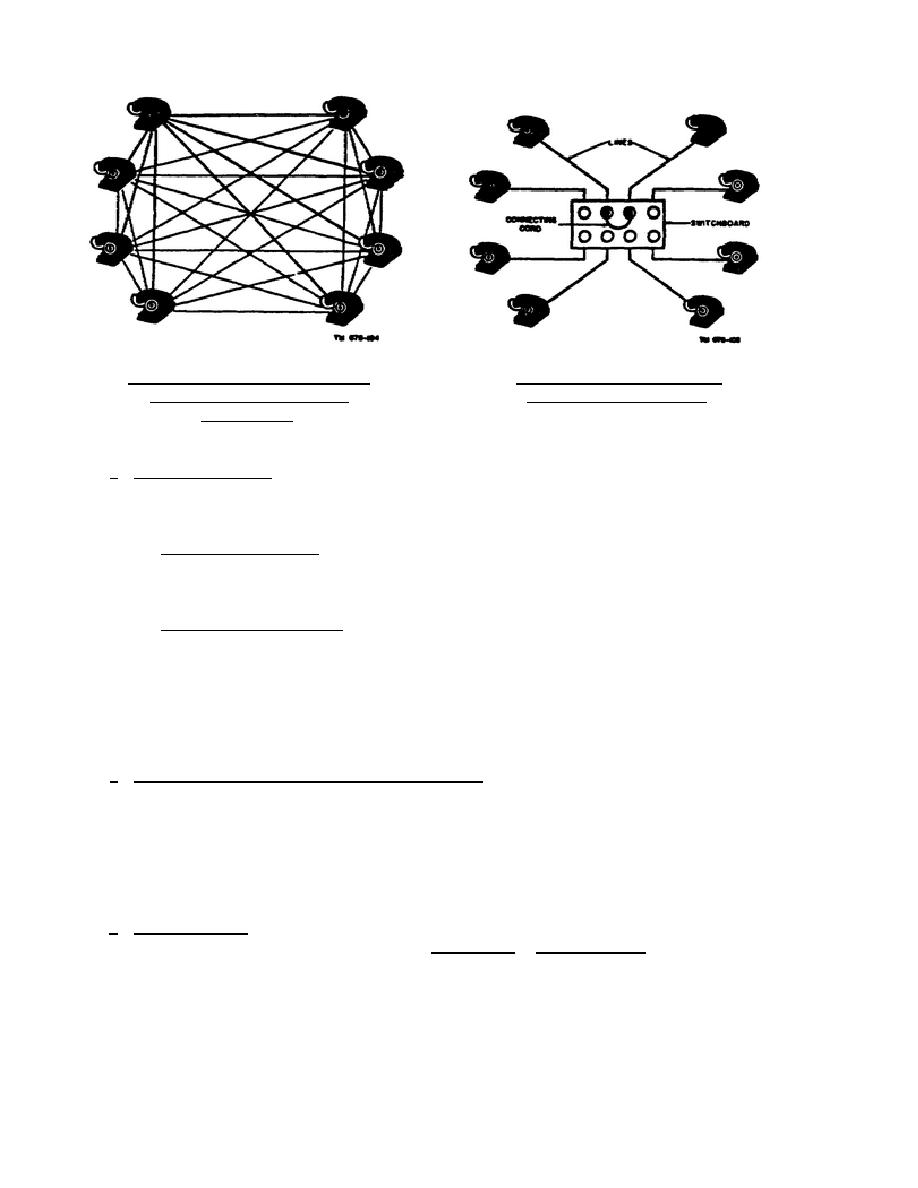
Figure 2-1. Station interconnections
Figure 2-2. Telephone stations
of a telephone system without
connected to a switchboard.
a switchboard.
c. Telephone Signaling. A local-battery telephone can signal another one with a handcranked generator, and
can also manually signal a switchboard with the generator voltage. On the other hand, a common-battery
telephone is limited to signaling the switchboard; it ordinarily cannot signal another telephone.
(1) Local-battery switching. When a telephone user turns his handcranked generator, the voltage causes
a switchboard "drop leaf" to fall, indicating to the operator that a call is arriving. The operator then
patches the line and rings the called party with a switchboard-generated voltage.
(2) Common-battery switching. When a telephone user lifts his handset from the telephone instrument, a
"supervisory" light automatically glows in the switchboard, alerting the operator that a call is arriving.
The switchboard operator then patches the line and rings the called party with a switchboard-
generated voltage.
2-4. COMPARISON OF TELEPHONE SYSTEMS
a. Comparison of Manual and Dial Telephone Systems. Telephone communication systems used by the US
Army must provide good telephone service under many kinds of operating conditions, both favorable and
unfavorable. Both manual and dial systems are used. Each system has its advantages and under certain
conditions provides better service than the others. Each telephone system therefore has an important place in the
military communications network. In general, dial systems are less suitable than manual systems for mobile
operations and usually are installed only at more permanent locations, such as posts and the larger headquarters in
the rear area of a theater of operations.
b. Manual Systems. Military field telephone systems must be mobile; they consequently use manual
switchboards. These switchboards may be either the local-battery or common-battery type.
14



 Previous Page
Previous Page
